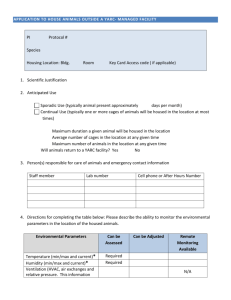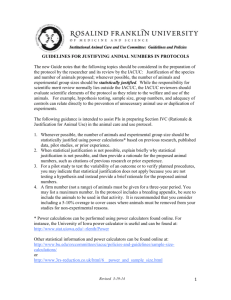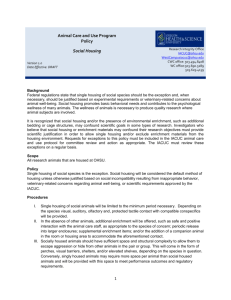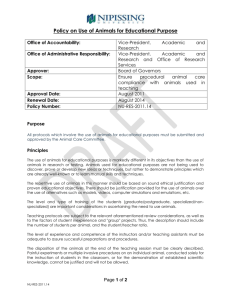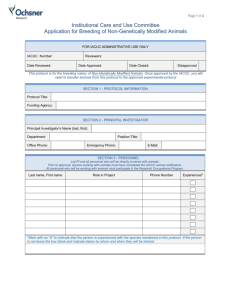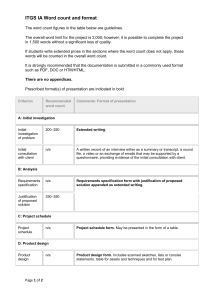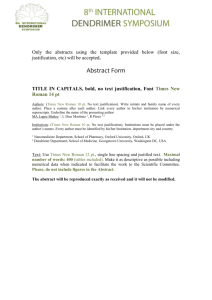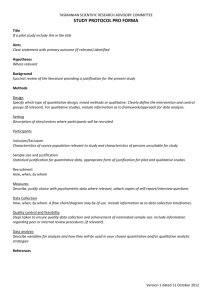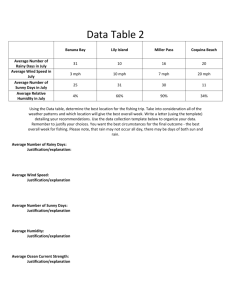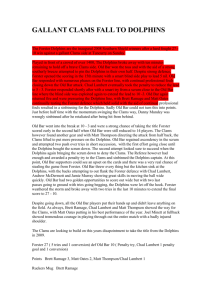D. Social Housing
advertisement
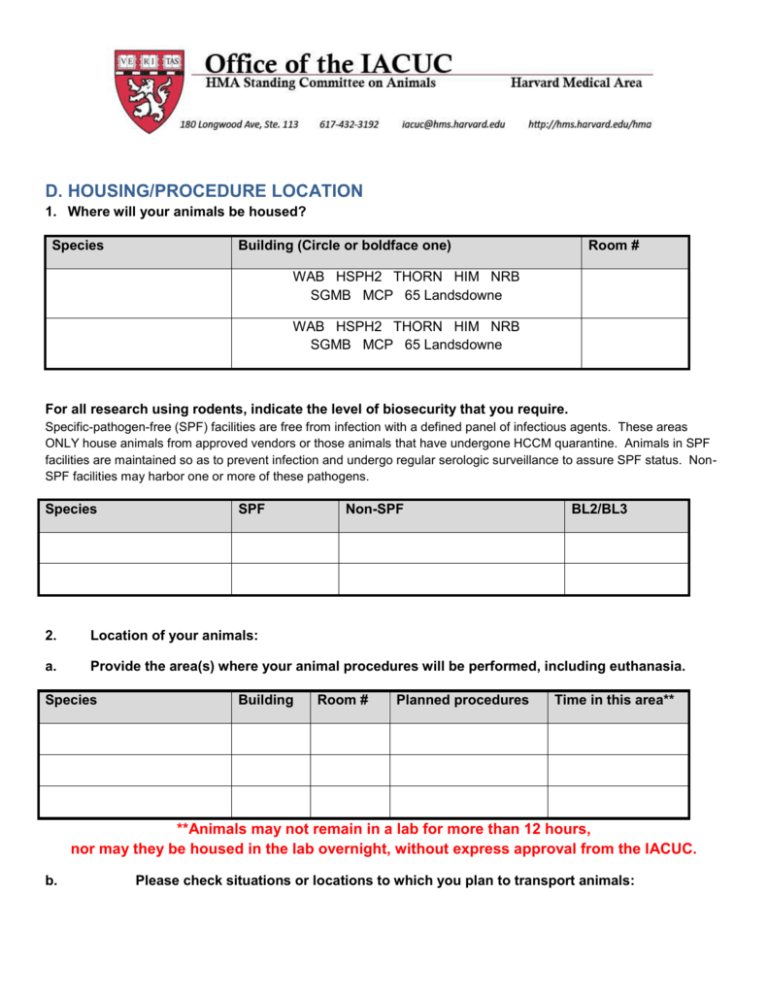
D. HOUSING/PROCEDURE LOCATION 1. Where will your animals be housed? Species Building (Circle or boldface one) Room # WAB HSPH2 THORN HIM NRB SGMB MCP 65 Landsdowne WAB HSPH2 THORN HIM NRB SGMB MCP 65 Landsdowne For all research using rodents, indicate the level of biosecurity that you require. Specific-pathogen-free (SPF) facilities are free from infection with a defined panel of infectious agents. These areas ONLY house animals from approved vendors or those animals that have undergone HCCM quarantine. Animals in SPF facilities are maintained so as to prevent infection and undergo regular serologic surveillance to assure SPF status. NonSPF facilities may harbor one or more of these pathogens. Species SPF Non-SPF BL2/BL3 2. Location of your animals: a. Provide the area(s) where your animal procedures will be performed, including euthanasia. Species Building Room # Planned procedures Time in this area** **Animals may not remain in a lab for more than 12 hours, nor may they be housed in the lab overnight, without express approval from the IACUC. b. Please check situations or locations to which you plan to transport animals: BWH SAIL MRI at 221 Longwood - clinical magnet (training and certification for use of human magnet required) BIDMC LSAIF BIDMC MRI (Non-LSAIF) MGH/Charlestown Transport of BL2 infected animals (specify origin and destination) Transport to any other institution (specify)* None of the above *Animal transport to any other institution requires submission of an approved IACUC protocol from that institution. c. 3. Please describe the associated transport plan: Identification of your animals: a. Specify the manner in which you identify your animals: Species Identification Method (Circle or boldface one) Ear notching/clipping Vendor-placed tag or tattoo Ear notching/clipping Vendor-placed tag or tattoo Ear tagging *Toe Clipping Ear tagging *Toe Clipping Tattooing Banding Micro-chipping Tattooing Other (Specify) Banding Micro-chipping Other (Specify) b. Describe the details of your method for identifying your animals: i. Describe the procedure for identifying your animals (vendor-placed tags/tattoos excluded): ii. Age of animal at time of ID procedure (note: Analgesia may be required under certain conditions): iii. Scientific justification is required for toe-clipping. All other methods of identification must first be considered. Page 2 of 3 State your justification here (you must contact the IACUC office to request an Exemption form): 4. Will your animals be housed in the CLAMS metabolic caging system? Yes* ☐ No ☐ *The use of CLAMS metabolic caging encompasses three deviations from standards: Cage size is smaller than standard, exemption from environmental enrichment, and social species housed individually. If you select “yes” here, you do not need to select each exemption individually. a. Scientific justification for use of CLAMS metabolic caging system: ☐ The CLAMS system is required and used standardly for metabolic monitoring and activity testing. The mice will only be in the cages for a few days at a time (at most). When doing gas exchange measurements, it is advisable to keep the chamber volume as small as possible so as to have the system be as responsive to changes in the animal's metabolism. This involves a trade-off in floor area and/or height. Columbus Instruments elected to provide adequate floor space so that activity could be sensed within a reasonably sized space. The present chamber is approximately 2.6 liters in volume. When the chamber is configured for use in CLAMS, we add a floor that raises the animal above the waste material and affords easy access to the feeder system. Raising the walking surface does reduce the head space. Thus far, all clients that use the system (for a total of 1,400 or so installed cages) have not met with objections to the head space issue because the animals are in the system for a short period of time, i.e. a couple of days. b. Or provide your own scientific justification: 5. Will your animals be socially housed (more than one animal per cage)? Yes ☐ No* ☐ *The HMA IACUC requires social housing of all social animals. If ‘NO’, provide scientific justification for not socially housing the animals. Describe what will be done to replace this social contact with conspecifics. a. Scientific justification for non-social housing of animals: b. Methods for replacing socialization: c. Will individually housed animals receive environmental enrichment? d. If ‘NO’, provide scientific justification for withholding environmental enrichment: 6. Will your animals be housed in excess of housing density guidelines? a. Scientific justification for housing density deviation: Page 3 of 3 Yes ☐ No* ☐
